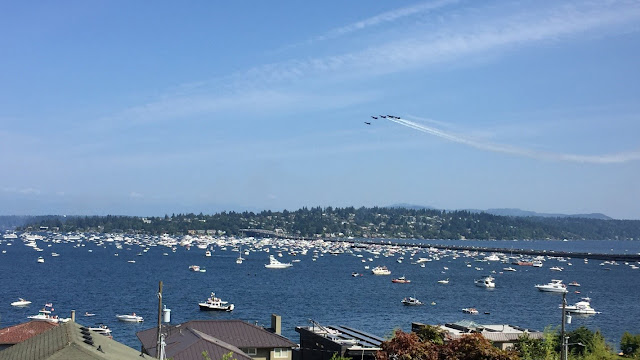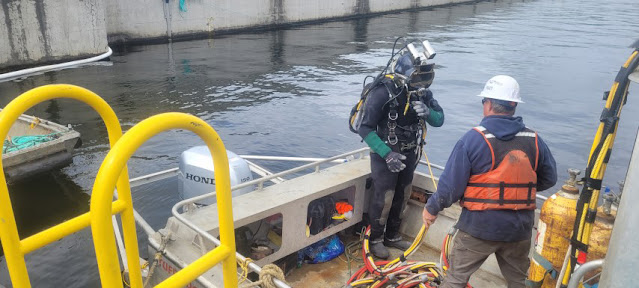By Tom Pearce
It's been a long summer of weekends as we've replaced expansion joints on southbound I-5 in Seattle, but this past weekend we reached a major milestone. We finished replacing expansion joints on the left half of the freeway between I-90 and Spokane Street.
That means if you drive in the left lanes, no more “ka-klunk” as you go over the 35 expansion joints on that section of I-5. We also have finished repaving a section at the south end of the project where three expansion joints were about a half-inch higher than the road surface. Now the road is flush with those joints, eliminating that bump.
 |
| Contractor crews prepare an expansion joint on the left side of southbound I-5 in Seattle for new parts during a weekend-long lane reduction earlier this year |
We still have to replace the right half of several expansion joints in this area as well as joints on ramps to and from southbound I-5 in this area. That work continues and we plan to finish by early October.
West Seattle Bridge reopening
We've been working with the Seattle Department of Transportation to coordinate our project schedule with theirs to reopen the West Seattle Bridge. With an announced opening date of Sunday, Sept. 18, our contractor's schedule will have the off-ramps to the West Seattle Bridge open that weekend. Instead of working on I-5, they'll replace expansion joints on the eastbound and westbound I-90 ramps to southbound I-5.
A little history
By the time we finish the Revive I-5 work, we will have replaced 56 expansion joints on southbound I-5 between I-90 and Spokane Street and on several of the ramps that serve this part of I-5. Many of those joints were part of the original I-5 construction in the early 1960s. We also repaved more than 1.25 miles of the freeway last year as part of this project.
 |
| In 2021 our contractor repaved 1.25 miles of southbound I-5 between I-90 and Spokane Street. |
A lot of northbound and southbound I-5 in Seattle is still from of the original construction. With our Revive I-5 effort, we are rehabilitating the freeway – replacing expansion joints, repaving sections, completely replacing the pavement in others and doing seismic work to strengthen bridges against earthquakes.
And in the future...
Starting in late 2023, we will begin an ambitious project to rehabilitate more than eight miles of the freeway between Yesler Way in downtown Seattle to Northgate in the north end of town. This multi-year project will involve a lot of the work mentioned above – expansion joints, repaving, replacing some pavement all the way down to dirt.
We're still sorting out the details of how the work will be done, but you can expect major lane reductions during construction season as well as some of the now-familiar weekend-long lane reductions.
In addition to this I-5 work, we'll have several other projects on I-5, I-405, I-90, SR 520 and other highways.
It all adds up to a lot of lane closures in the coming years. Just like our current project on southbound I-5, we'll work to wrap them up as soon as possible. In the meantime, thanks for your continued patience.































